

Growing black salsify starts in May whereas the harvest takes place from fall to winter.
Black salsify basic facts
Name – Scorzonera hispanica
Family – Asteraceae
Type – vegetable
Height – 12 to 36 inches (30 to 90 cm)
Exposure – full sun
Soil – deep, rather light, rich & well drained
Sowing: end of winter, early spring – Harvest: from mid-fall to early spring
Whether you start from seed or plant young plants directly, you’ll see that it’s quite easy to grow superb black salsify roots.
Black salsify can be grown from seed or by planting young sprouts.
This method of growing black salsify can be successfully followed by all, even beginners.
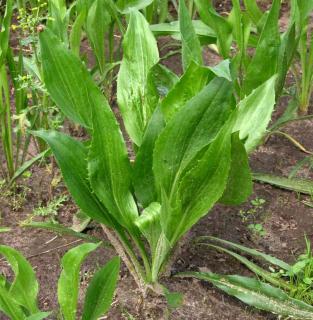 Start at the end of winter, towards March and April, directly in the ground.
Start at the end of winter, towards March and April, directly in the ground.If you’ve purchased black salsify as young plants in pots, plan to transfer them to the ground in spring.
Black salsify is a perennial or biennial that calls for minimal care, perhaps only regular watering in case of high temperatures.
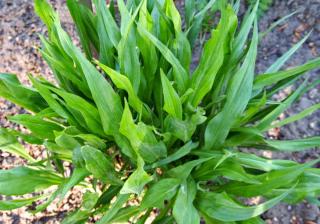 As winter draws near, spread dried leaf mulch atop the plants in order to make pulling them out easier and protect them from the cold.
As winter draws near, spread dried leaf mulch atop the plants in order to make pulling them out easier and protect them from the cold.Black salsify is a vegetable that is quite easy-growing and it fears only very few diseases.
Nonetheless, it may be that your plants attract slugs and caterpillars…
One can harvest black salsify from October to April, simply pulling the roots out.
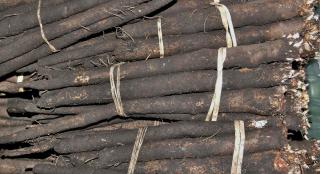 Before the plant goes to seed, cut flower stems.
Before the plant goes to seed, cut flower stems.Scorzonera is another name for black salsify. It’s quite easy to cook and prepare, certainly no more difficult than potato or parsnip!
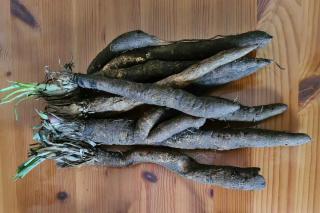 You can use it in all your recipes to replace potato: mashed, in stews, baked in the over…
You can use it in all your recipes to replace potato: mashed, in stews, baked in the over…
In addition, it’s delicious when cut into thin strips and grilled, like on a barbecue.
Simply peel the skin off with a vegetable knife, as you would carrot.
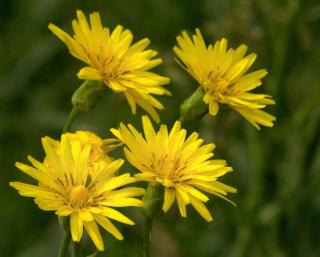 Its many varieties like ‘Russian black giant’ and ‘Spanish salsify’, the hispanica variety, must not lead you into thinking that black and white salsify are the same, even though they are quite similar.
Its many varieties like ‘Russian black giant’ and ‘Spanish salsify’, the hispanica variety, must not lead you into thinking that black and white salsify are the same, even though they are quite similar.
It is often confused with salsify which is a different albeit related plant. Black salsify has a higher culinary value.
Black salsify can be identified thanks to its black root and yellow flowers, and white salsify roots are white with pink or blue flowers.
Black salsify has high levels of carbohydrates, allantoin and also vitamins E, B and C. This makes this root a very interesting vegetable as regards nutrition.
It is recommended to amend the soil with compost before planting and to loosen up the soil well.